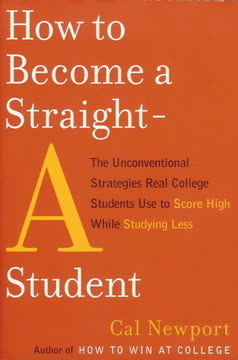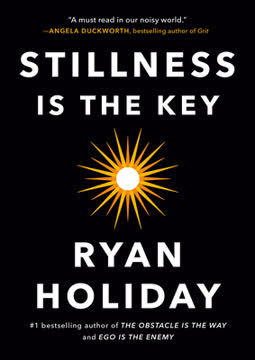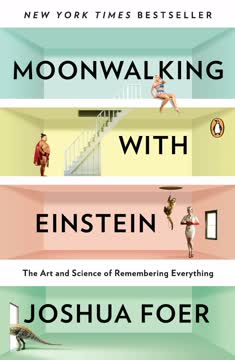Key Takeaways
1. Recognize the two selves: Self 1 (the Stress Maker) and Self 2 (inner wisdom)
"Self 1 was filled with the concepts and expectations of others, and usually delivered them with the voice of a drill sergeant. He couldn't play, but, boy, did he have plenty of criticisms!"
Self 1 vs. Self 2. The Inner Game concept introduces two distinct selves within us. Self 1 is the critical, judgmental voice that creates stress and doubt. It's the internal narrator that constantly evaluates, worries, and second-guesses our actions. Self 2, on the other hand, represents our natural abilities, intuition, and inner wisdom. It's the part of us that can perform effortlessly when not interfered with by Self 1.
Recognizing the difference. The key to reducing stress and improving performance lies in distinguishing between these two selves. By learning to quiet Self 1 and trust Self 2, we can access our full potential and reduce unnecessary stress. This applies not only to sports and professional settings but to all aspects of life.
Signs of Self 1 interference:
- Excessive self-criticism
- Overthinking simple tasks
- Feeling paralyzed by fear of failure
Characteristics of Self 2 performance: - Effortless flow
- Heightened focus and awareness
- Natural learning and improvement
2. Understand stress as a choice, not an inevitability
"Living in chronic stress is not possible without serious consequences."
Stress is not mandatory. Contrary to popular belief, stress is not an inevitable part of modern life. It's a response we choose, often unconsciously, based on our perceptions and attitudes. By recognizing this, we can start to make different choices about how we respond to challenging situations.
Health implications. Chronic stress has serious health consequences, affecting our physical, mental, and emotional well-being. It's not just uncomfortable; it's actively harmful to our bodies and minds. Understanding this can motivate us to take stress reduction seriously.
Physical effects of chronic stress:
- Weakened immune system
- Increased risk of heart disease
- Digestive issues
Mental and emotional effects: - Anxiety and depression
- Impaired decision-making
- Reduced quality of life
3. Utilize the STOP tool to break stress momentum
"STOP is a surprisingly simple tool, and it means exactly what it says: Stop the unconscious momentum and make the shift to being conscious."
Breaking the cycle. The STOP tool is a powerful technique for interrupting the automatic stress response. It consists of four steps: Step back, Think, Organize your thinking, and Proceed. This simple process allows you to pause, reflect, and make conscious choices rather than reacting automatically to stressors.
Practical application. STOP can be used in any situation where you feel stress building. It's particularly effective in high-pressure work environments, difficult conversations, or when facing important decisions. By creating a moment of pause, you give yourself the opportunity to respond thoughtfully rather than react impulsively.
How to use STOP:
- Step back: Create physical or mental distance from the situation
- Think: Reflect on what's really happening and why you're feeling stressed
- Organize: Plan your response based on your priorities and values
- Proceed: Move forward with clear intention and reduced stress
4. Become the CEO of your life to regain control
"Your life is yours. You are its owner. Ownership is the foundation of stability and responsibility."
Taking charge. Viewing yourself as the CEO of your life shifts your perspective from victim to decision-maker. This mindset empowers you to take responsibility for your choices, set clear priorities, and make decisions aligned with your values and goals.
Practical steps. To embody this CEO mentality, start by defining your life's mission statement, identifying your core values, and setting clear priorities. Regularly assess your decisions and actions to ensure they align with your overall vision for your life.
Key areas to focus on as the CEO of your life:
- Personal mission and values
- Relationships and social connections
- Career and financial decisions
- Health and well-being
- Personal growth and learning
5. Apply the Three Control Questions to manage stress
"What don't I control here? What am I currently trying to control? What could I control that I'm not presently controlling?"
Focusing on what matters. The Three Control Questions help you identify areas where you're expending energy unnecessarily and redirect your focus to aspects of your life where you can make a real difference. This tool is particularly useful in situations that feel overwhelming or out of control.
Shifting perspective. By answering these questions, you gain clarity on your sphere of influence and can let go of trying to control things beyond your power. This shift often leads to a significant reduction in stress and an increase in effectiveness.
Benefits of using the Three Control Questions:
- Reduced anxiety about uncontrollable factors
- Increased sense of empowerment
- More effective problem-solving
- Better allocation of time and energy
6. Cultivate inner stability through awareness, choice, and trust
"Awareness tells you where you are. Choice tells you where you want to be. Trust in your own resources, inner and outer, is the key ingredient to movement toward your desired outcome."
The ACT framework. Awareness, Choice, and Trust (ACT) form the foundation of inner stability. Awareness helps you understand your current state and surroundings. Choice empowers you to decide on your desired direction. Trust in your abilities and resources gives you the confidence to move forward.
Practical application. Cultivating these three elements in your daily life can lead to greater resilience and reduced stress. Practice mindfulness to increase awareness, make conscious choices aligned with your values, and build trust in yourself through positive self-talk and acknowledging past successes.
Ways to develop ACT:
- Awareness: Regular meditation or mindfulness practices
- Choice: Decision-making exercises and journaling
- Trust: Reflecting on past achievements and overcoming self-doubt
7. Embrace the PLE Triangle: Performance, Learning, and Enjoyment
"Three things actually happen at the same time when the Inner Game is being played well. Performance is excellent, learning is occurring naturally, and enjoyment is present."
Balancing priorities. The PLE Triangle emphasizes the importance of balancing Performance, Learning, and Enjoyment in any activity. Often, we focus solely on performance, neglecting the other two crucial aspects. By giving equal weight to all three, we can achieve better results and greater satisfaction.
Applying PLE. Consider how you can incorporate all three elements into your work, relationships, and personal pursuits. Set goals not just for what you want to achieve, but for what you want to learn and how you want to feel during the process.
Questions to ask yourself when applying PLE:
- Performance: What specific outcomes am I aiming for?
- Learning: What new skills or insights can I gain from this experience?
- Enjoyment: How can I find pleasure or satisfaction in this activity?
8. Redefine your perspectives to reduce stress
"The purpose of the Redefine tool is to bring our key definitions into conscious awareness so that we can let go of what isn't aligned with our current commitments and to allow us to choose what is."
Challenging assumptions. The Redefine tool encourages you to examine and update the definitions and beliefs that shape your perception of the world. Many of our stress-inducing thoughts come from outdated or limiting definitions we've accumulated over time.
Steps to redefine. Start by identifying a stressful concept or belief. Trace its origin and question its current validity. Then, create a new definition that aligns better with your present values and goals. This process can dramatically reduce stress by changing how you interpret and respond to various situations.
Areas to apply the Redefine tool:
- Self-image and personal worth
- Definitions of success and failure
- Relationships and social expectations
- Work and career goals
- Life purpose and meaning
9. Build a personal shield using inner resources
"The shield can be made out of inner abilities of your own choosing."
Creating protection. The concept of a personal shield involves consciously selecting and cultivating inner resources to protect yourself from stress and negative influences. These resources can include qualities like clarity, hope, understanding, awareness, and courage.
Customizing your shield. Your personal shield should be tailored to your specific needs and challenges. Regularly assess which inner resources you need most and focus on developing them. This proactive approach to stress management can significantly increase your resilience.
Steps to build your personal shield:
- Identify your most common stressors
- List your existing inner strengths
- Choose 3-5 key qualities to focus on developing
- Practice embodying these qualities in daily life
- Regularly update your shield based on new challenges
10. Transform aging and mortality into opportunities for growth
"You can say, 'I am not going to let stress rob me of the chance to enjoy this great gift of life.'"
Reframing aging. Instead of viewing aging as a decline, see it as an opportunity for continued growth, learning, and enjoyment. This shift in perspective can significantly reduce stress associated with getting older and enhance quality of life in later years.
Embracing mortality. Accepting the reality of death can paradoxically lead to a fuller, more meaningful life. It can motivate us to prioritize what truly matters, let go of trivial concerns, and live more authentically.
Ways to embrace aging positively:
- Set new learning goals at every stage of life
- Focus on wisdom and experience as valuable assets
- Cultivate intergenerational relationships
- Engage in activities that bring joy, regardless of age
Approaches to facing mortality: - Regular reflection on life's meaning and purpose
- Practicing gratitude for each day
- Creating a legacy through relationships and contributions to others
Last updated:
FAQ
What's "The Inner Game of Stress" about?
- Focus on Inner Resources: The book emphasizes using inner resources to manage stress, rather than relying solely on external solutions.
- Inner Game Concept: It builds on the Inner Game series, applying its principles to stress management by focusing on awareness, choice, and trust.
- Practical Tools: The authors provide practical tools and exercises to help readers build stability and resilience against stress.
- Integration of Medical Insights: The book combines insights from sports coaching and medical practice to offer a holistic approach to stress management.
Why should I read "The Inner Game of Stress"?
- Holistic Approach: It offers a unique blend of psychological and medical insights to tackle stress comprehensively.
- Practical Tools: The book provides actionable tools and exercises that can be applied in everyday life to reduce stress.
- Empowerment: It empowers readers to take control of their stress by understanding and utilizing their inner resources.
- Proven Methodology: The Inner Game approach has been successful in various fields, and this book adapts it specifically for stress management.
What are the key takeaways of "The Inner Game of Stress"?
- Awareness, Choice, Trust (ACT): These are the core principles for managing stress effectively.
- Inner Resources: Recognizing and utilizing inner resources like clarity, courage, and compassion are crucial for stability.
- Practical Tools: Tools like STOP, the Magic Pen, and the PLE Triangle help in managing stress proactively.
- Role of Self 1 and Self 2: Understanding the roles of Self 1 (the Stress Maker) and Self 2 (the natural self) is essential for reducing stress.
How does the STOP tool work in "The Inner Game of Stress"?
- Step Back: Create distance from the stressful situation to gain perspective.
- Think: Reflect on the truth of the situation, your priorities, and options.
- Organize: Arrange your thoughts to form a clear plan of action.
- Proceed: Move forward with clarity and purpose, reducing stress.
What is the ACT principle in "The Inner Game of Stress"?
- Awareness: Being aware of your current state and surroundings without judgment.
- Choice: Making conscious decisions based on awareness, rather than reacting automatically.
- Trust: Trusting in your inner resources and capabilities to handle stress effectively.
- Integration: These principles work together to help manage stress and improve well-being.
How does "The Inner Game of Stress" define Self 1 and Self 2?
- Self 1: Known as the Stress Maker, it is the critical, judgmental voice that creates stress.
- Self 2: Represents the natural, capable self that can perform without interference.
- Interference: Stress often arises when Self 1 interferes with the natural abilities of Self 2.
- Balance: The book teaches how to minimize Self 1's interference to allow Self 2 to function optimally.
What are some practical exercises from "The Inner Game of Stress"?
- Magic Pen Tool: Write down thoughts using inner resources like clarity and compassion to gain new insights.
- Transposing: See situations from another person's perspective to enhance empathy and understanding.
- Redefine Tool: Change your definitions of stressful concepts to align with your current commitments.
- PLE Triangle: Balance performance, learning, and enjoyment in any activity to reduce stress.
How does "The Inner Game of Stress" address chronic stress?
- Understanding Chronic Stress: It explains how chronic stress affects the body and mind, leading to various health issues.
- Medical Insights: The book integrates medical knowledge to show the physiological impact of stress.
- Preventive Measures: It emphasizes building inner stability to prevent stress from becoming chronic.
- Holistic Approach: Combines psychological tools with medical advice for comprehensive stress management.
What role do inner resources play in "The Inner Game of Stress"?
- Foundation of Stability: Inner resources like courage, clarity, and compassion are foundational for building stability.
- Natural Abilities: These resources are inherent and can be developed through practice and awareness.
- Protection Against Stress: They act as a personal shield against external stressors.
- Empowerment: Utilizing inner resources empowers individuals to manage stress more effectively.
What are the best quotes from "The Inner Game of Stress" and what do they mean?
- "The secret lies in knowing that you have choices about how you look at external events." This emphasizes the power of perspective in managing stress.
- "Awareness itself would inform Self 2 of what felt better, sounded better, and flew off the racquet better." Highlights the importance of nonjudgmental awareness in improving performance.
- "The Inner Game is about learning to play in our zone in everyday life." Encourages applying the Inner Game principles to daily challenges for better stress management.
- "You are the chooser. You are a sovereign." Empowers readers to take ownership of their lives and decisions.
How does "The Inner Game of Stress" integrate medical insights?
- Medical Collaboration: Co-authors are medical doctors who provide insights into the physiological effects of stress.
- Scientific Basis: The book discusses the biological mechanisms of stress and its impact on health.
- Holistic Health: Combines medical advice with psychological tools for a comprehensive approach to stress management.
- Patient Stories: Real-life patient stories illustrate the practical application of the book's principles.
How can "The Inner Game of Stress" help with life and death matters?
- End-of-Life Care: The book discusses how the Inner Game principles can be applied to end-of-life situations for peace and acceptance.
- Reducing Fear: Tools like the Attitude Exercise help reduce fear and anxiety about death.
- Quality of Life: Emphasizes enjoying life and finding meaning, even in the face of mortality.
- Empowerment: Encourages taking control of one's life and decisions, regardless of external circumstances.
Review Summary
The Inner Game of Stress received mostly positive reviews, with readers praising its practical tools and insights for managing stress. Many found the concepts easy to understand and apply to everyday life. Some appreciated the real-life examples and medical information provided. Critics noted that the book may not offer much new information for those familiar with stress management techniques. Overall, readers found it helpful in reframing their approach to stress and developing strategies to cope with life's challenges.
Similar Books










Download PDF
Download EPUB
.epub digital book format is ideal for reading ebooks on phones, tablets, and e-readers.







